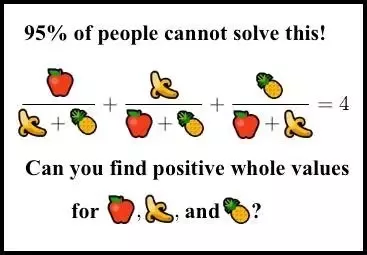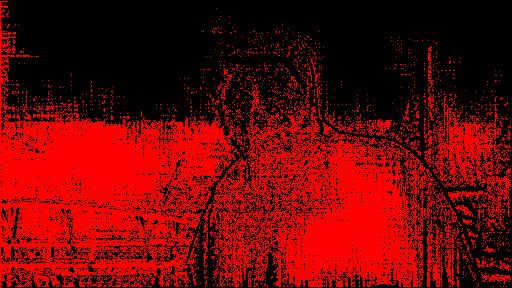AMS Student Chapter Seminar
The AMS Student Chapter Seminar is an informal, graduate student seminar on a wide range of mathematical topics. Pastries (usually donuts) will be provided.
- When: Wednesdays, 3:20 PM – 3:50 PM
- Where: Van Vleck, 9th floor lounge (unless otherwise announced)
- Organizers: Michel Alexis, David Wagner, Patrick Nicodemus, Son Tu, Carrie Chen
Everyone is welcome to give a talk. To sign up, please contact one of the organizers with a title and abstract. Talks are 25 minutes long and should avoid assuming significant mathematical background beyond first-year graduate courses.
The schedule of talks from past semesters can be found here.
Spring 2020
February 5, Alex Mine
Title: TBD
Abstract: TBD
February 12, TBD
Title: TBD
Abstract: TBD
February 19, TBD
Title: TBD
Abstract: TBD
February 26, TBD
Title: TBD
Abstract: TBD
March 4, TBD
Title: TBD
Abstract: TBD
Fall 2019
October 9, Brandon Boggess
Title: An Application of Elliptic Curves to the Theory of Internet Memes
Abstract: Solve polynomial equations with this one weird trick! Math teachers hate him!!!
October 16, Jiaxin Jin
Title: Persistence and global stability for biochemical reaction-diffusion systems
Abstract: The investigation of the dynamics of solutions of nonlinear reaction-diffusion PDE systems generated by biochemical networks is a great challenge; in general, even the existence of classical solutions is difficult to establish. On the other hand, these kinds of problems appear very often in biological applications, e.g., when trying to understand the role of spatial inhomogeneities in living cells. We discuss the persistence and global stability properties of special classes of such systems, under additional assumptions such as: low number of species, complex balance or weak reversibility.
October 23, Erika Pirnes
(special edition: carrot seminar)
Title: Why do ice hockey players fall in love with mathematicians? (Behavior of certain number string sequences)
Abstract: Starting with some string of digits 0-9, add the adjacent numbers pairwise to obtain a new string. Whenever the sum is 10 or greater, separate its digits. For example, 26621 would become 81283 and then 931011. Repeating this process with different inputs gives varying behavior. In some cases the process terminates (becomes a single digit), or ends up in a loop, like 999, 1818, 999... The length of the strings can also start growing very fast. I'll discuss some data and conjectures about classifying the behavior.
October 30, Yunbai Cao
Title: Kinetic theory in bounded domains
Abstract: In 1900, David Hilbert outlined 23 important problems in the International Congress of Mathematics. One of them is the Hilbert's sixth problem which asks the mathematical linkage between the mechanics from microscopic view and the macroscopic view. A relative new mesoscopic point of view at that time which is "kinetic theory" was highlighted by Hilbert as the bridge to link the two. In this talk, I will talk about the history and basic elements of kinetic theory and Boltzmann equation, and the role boundary plays for such a system, as well as briefly mention some recent progress.
November 6, Tung Nguyen
Title: Introduction to Chemical Reaction Network
Abstract: Reaction network models are often used to investigate the dynamics of different species from various branches of chemistry, biology and ecology. The study of reaction network has grown significantly and involves a wide range of mathematics and applications. In this talk, I aim to show a big picture of what is happening in reaction network theory. I will first introduce the basic dynamical models for reaction network: the deterministic and stochastic models. Then, I will mention some big questions of interest, and the mathematical tools that are used by people in the field. Finally, I will make connection between reaction network and other branches of mathematics such as PDE, control theory, and random graph theory.
November 13, Stephen Davis
Title: Brownian Minions
Abstract: Having lots of small minions help you perform a task is often very effective. For example, if you need to grade a large stack of calculus problems, it is effective to have several TAs grade parts of the pile for you. We'll talk about how we can use random motions as minions to help us perform mathematical tasks. Typically, this mathematical task would be optimization, but we'll reframe a little bit and focus on art and beauty instead. We'll also try to talk about the so-called "storytelling metric," which is relevant here. There will be pictures and animations! 🎉
Sneak preview: some modern art generated with MATLAB.
November 20, Colin Crowley
Title: Matroid Bingo
Abstract: Matroids are combinatorial objects that generalize graphs and matrices. The famous combinatorialist Gian Carlo Rota once said that "anyone who has worked with matroids has come away with the conviction that matroids are one of the richest and most useful ideas of our day." Although his day was in the 60s and 70s, matroids remain an active area of current research with connections to areas such as algebraic geometry, tropical geometry, and parts of computer science. Since this is a doughnut talk, I will introduce matroids in a cute way that involves playing bingo, and then I'll show you some cool examples.
December 4, Xiaocheng Li
Title: The method of stationary phase and Duistermaat-Heckman formula
Abstract: The oscillatory integral $\int_X e^{itf(x)}\mu=:I(t), t\in \mathbb{R}$ is a fundamental object in analysis. In general, $I(t)$ seldom has an explicit expression as Fourier transform is usually inexplicit. In practice, we are interested in the asymptotic behavior of $I(t)$, that is, for $|t|$ very large. A classical tool of getting an approximation is the method of stationary phase which gives the leading term of $I(t)$. Furthermore, there are rare instances for which the approximation coincides with the exact value of $I(t)$. One example is the Duistermaat-Heckman formula in which the Hamiltonian action and the momentum map are addressed. In the talk, I will start with basic facts in Fourier analysis, then discuss the method of stationary phase and the Duistermaat-Heckman formula.
December 11, Chaojie Yuan
Title: Coupling and its application in stochastic chemical reaction network
Abstract: Stochastic models for chemical reaction networks have become increasingly popular in the past few decades. When the molecules are present in low numbers, the chemical system always displays randomness in their dynamics, and it cannot be ignored as it can have a significant effect on the overall properties of the dynamics. In this talk, I will introduce the stochastic models utilized in the context of biological interaction network. Then I will discuss coupling in this context, and illustrate through examples how coupling methods can be utilized for numerical simulations. Specifically, I will introduce two biological models, which attempts to address the behavior of interesting real-world phenomenon.

